"Overthrowing the standard War Department policy"
The news clipping taped to a letter caught my eye. Retired Lt. Gen. Charles D. Herron wrote the letter to Gen. George C. Marshall in August 1944 about the service of Japanese-Americans in the U.S. Army. The clipping told of awards given by Gen. Mark Clark to soldiers of the 100th Battalion of the 442nd Regimental Combat Team. Herron, who served as the commander of U.S. forces in Hawaii before World War II, commented that the clipping “was the perfect confirmation of your good judgement in allowing the Hawaiian-Japanese to be trained for battle and in overthrowing the standing War Department policy.”
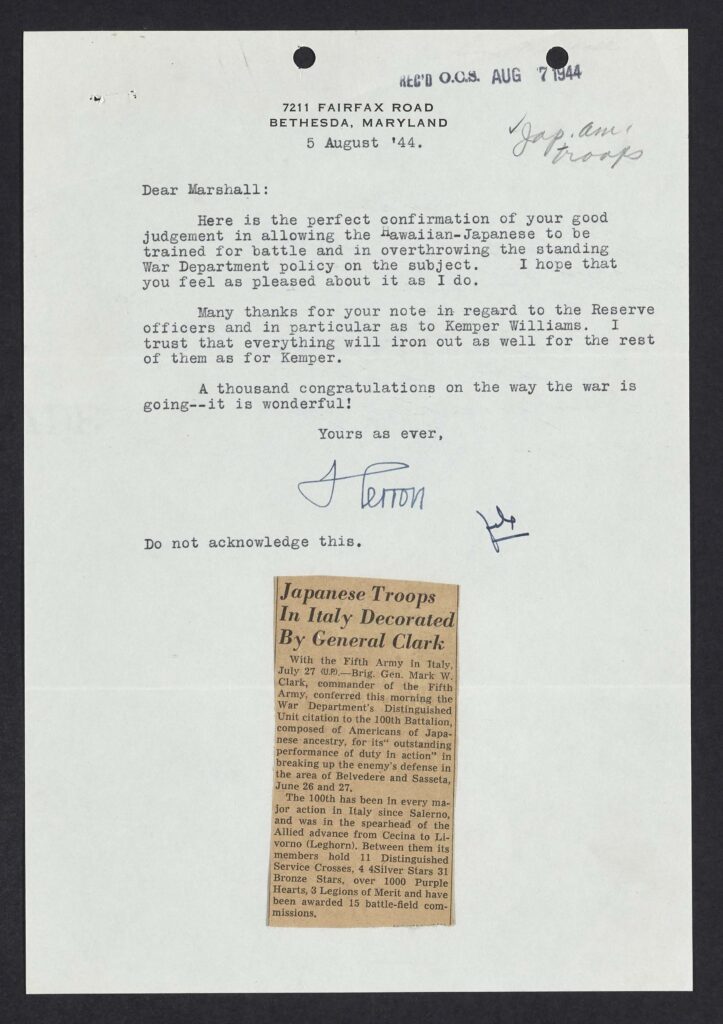
Letter from Gen. Charles D. Herron to Gen. George C. Marshall regarding awards to members of the 442nd Regimental Combat Team
In the early days of World War II, men of Japanese descent were classified 4C, “enemy alien.” In 1942, the Board of Military Utilization of U.S. Citizens of Japanese Ancestry, which consisted of five Army colonels and a war relocation authority, met to address possible changes to this classification. They issued a report denying Japanese-American men the right to serve “because of the universal distrust in which they are held.”
A month after the report was released, an official from the Office of War Information wrote to President Franklin D Roosevelt, asking that a Nisei (children of Japanese immigrants with U.S. citizenship) combat unit be created to push back against claims of American racism. On February 1, 1943, Roosevelt announced the creation of the 442nd Regimental Combat Team, an all Japanese-American unit with white commanding officers.
Although the President had signed Executive Order 9066, interning U.S. citizens of Japanese descent, he said on February 1 that “no loyal citizen of the United States should be denied the democratic right to exercise the responsibilities of his citizenship, regardless of his ancestry. The principle on which this country was founded and by which it has always been governed is that Americanism is a matter of the mind and heart; Americanism is not, and never was, a matter of race or ancestry.”
The applicants to the 442nd would have to pass strict loyalty requirements; all prospective soldiers would have to answer a questionnaire which asked if they were willing to serve anywhere, and if they swore complete allegiance to the United States. The questionnaire angered many enlistees as this question was not asked of all soldiers, and they were U.S. citizens, so there was in their minds no question of their loyalty.
More than 10,000 volunteers applied for the new unit, four times more than spaces available. Two-thirds were residents of Hawaii, and one-third from the continental United States, many from internment camps. The unit’s motto was “Go for Broke.” Some Issei (Japanese immigrant) parents were unsettled at the unit designation “442,” as the word for “four” is a homophone to the word for “death” in Japanese.
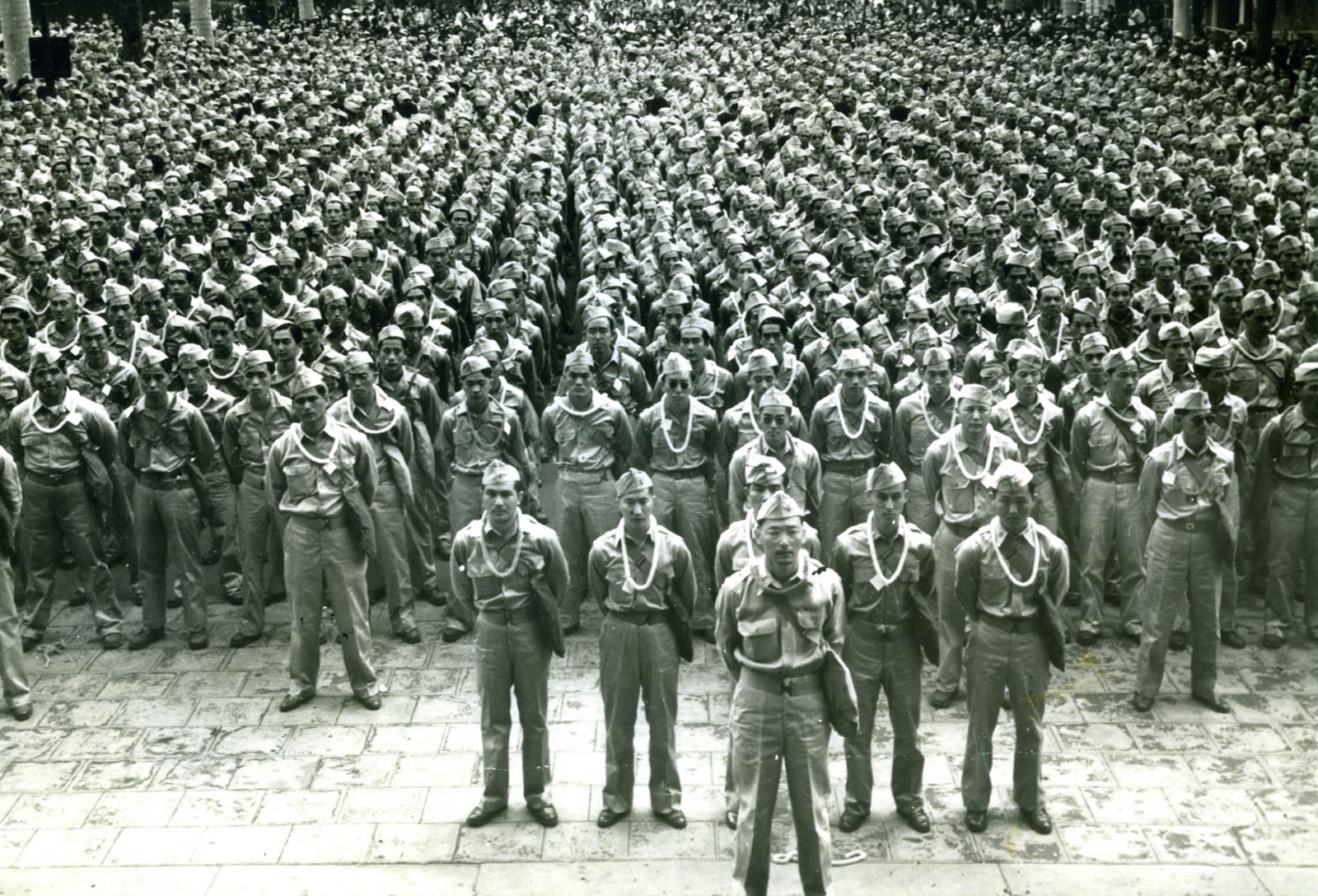
Hawaiian members of the 442nd Regimental Combat Team at a farewell, March 1943. Photo courtesy Nisei Veterans Legacy
On March 28, 1943, the Honolulu Chamber of Commerce had a farewell for the 2,686 Nisei volunteers from Hawaii in front of Iolani Palace, the governor’s office. The Honolulu Star Bulletin wrote of the day:
No scene in Honolulu during World War II has been more striking, more significant, than that at the territorial capitol grounds on Sunday. It was not alone the size of the crowd, somewhere between 15,000 and 17,000 … it was, most significantly, the evident pride of the families and friends of these young Americans – their pride that the youths are entrusted with the patriotic mission of fighting, for the country and the Allied nations.
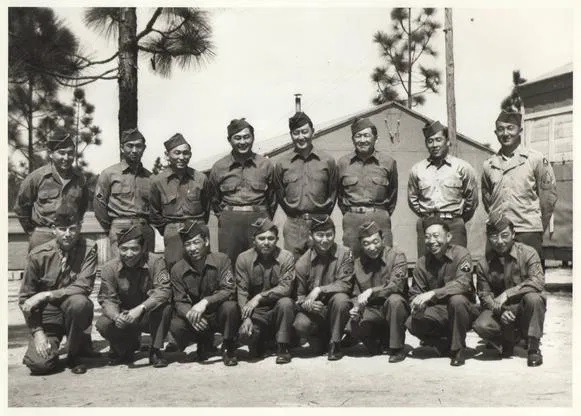
Members of the 442nd while training at Camp Shelby, Mississippi. Army Signal Corps photo.
The 442nd was trained at Camp Shelby, Mississippi, for a year before being sent Europe in June 1944. They fought in the Rome-Arno Campaign in July, fought at Bruyeres-Biffontaine, and in the Gothic Line and Po Valley campaigns.
Their most famous action was the rescue of the Lost Battalion in the Vosges Mountains of France in October 1944.
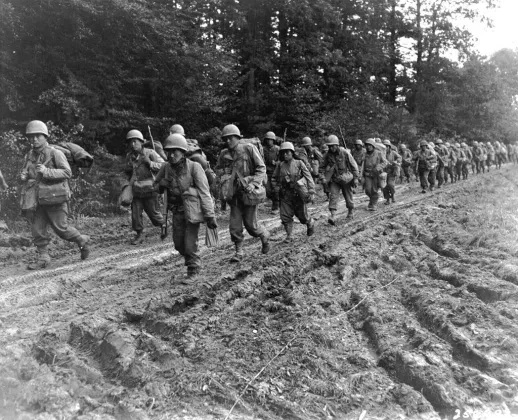
Soldiers from the 442nd march through mud on the rescue of the Lost Battalion, Vosges Mountains, France, October 1944. Army Signal Corps photo.
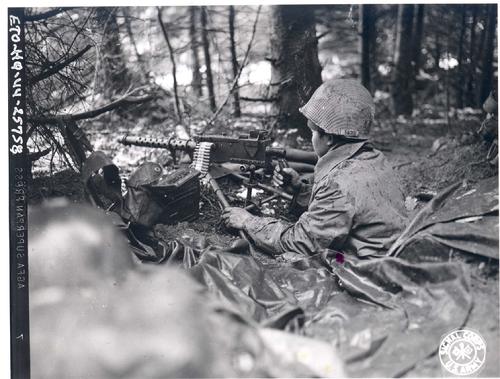
Solider from the 442nd at a machine gun during the rescue of the Lost Battalion, October 1944. Army Signal Corps photo.
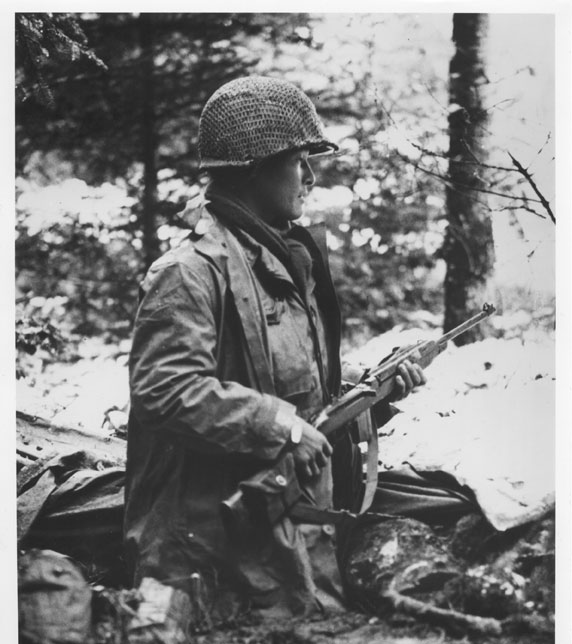
Soldier of the 442nd during the rescue of the Lost Battalion, October 1944. Army Signal Corps photo.
Two hundred men of the 141st Regiment had become stranded in the Vosges Mountains in France. Men from the 442nd climbed uphill in rain and freezing temperatures, gaining small amounts of ground each day over 10 days as the German field artillery fired down on them in the successful rescue of the unit. At an awards ceremony a short time later, the awarding officer was dismayed that so few men from the unit were present. He was told that the rest were either in the hospital or dead.

Soldiers of the 442nd during the awards ceremony after the rescue of the Lost Battalion. Army Signal Corps photo.
By the end of the war, the 442nd was awarded more than 4,000 Purple Hearts, eight Presidential Unit citations, 559 Silver Stars, and 52 Distinguished Service crosses, among other decorations.
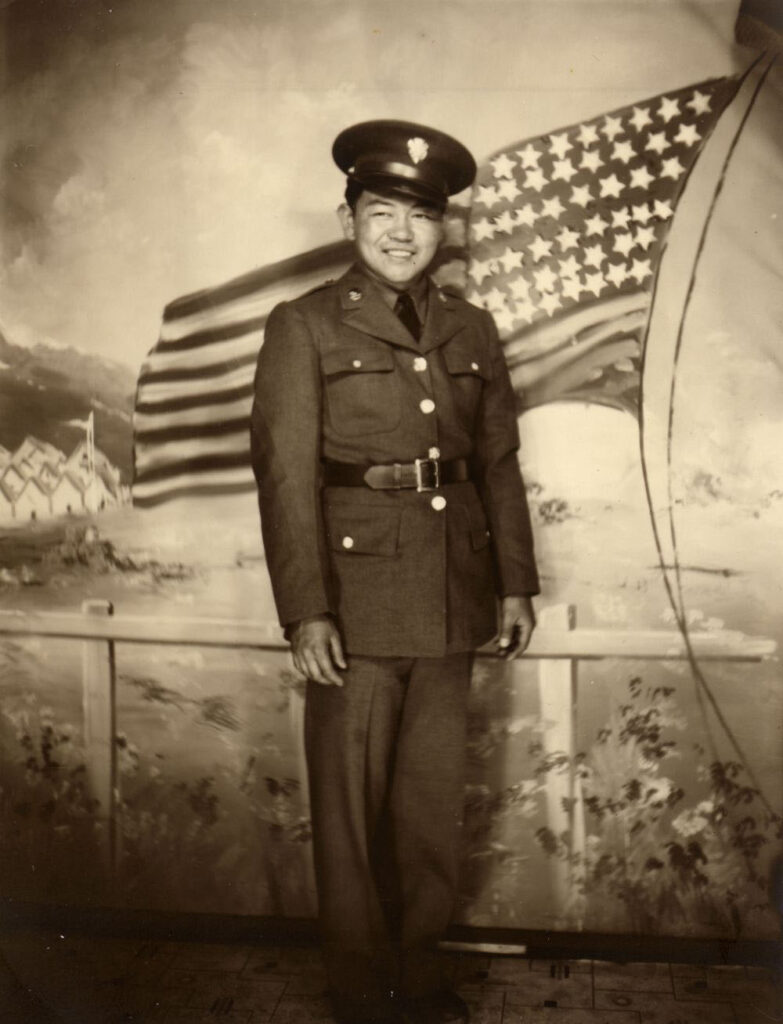
Private 1st Class Sadao Munemori, the only 442nd soldier awarded the Medal of Honor during the war. Smithsonian Asian Pacific Heritage Center photo.
Only one member received the Medal of Honor, posthumously: Private 1st Class Sadao Munemori, who destroyed a German machine gun emplacement single-handedly, and when he returned to soldiers gathered in an artillery crater, threw himself on a grenade, dying instantly but saving the others.
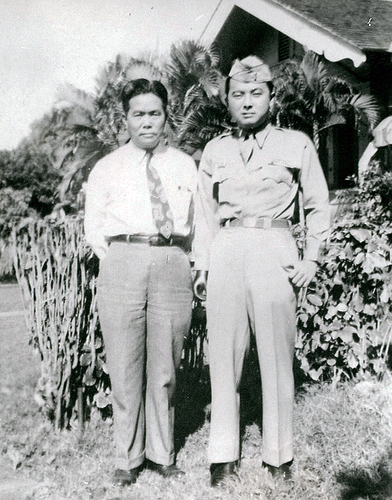
Hyotaro Inouye welcomes his son Lt. Daniel K. Inouye home in 1945. Lt. Inouye wears a hook replacing his right arm. Inouye family photo.
A much-later review of the 442nd soldiers’ bravery during the war resulted in 20 additional Medals of Honor being awarded, including to former Senator Daniel K. Inouye of Hawaii.
The 442nd Regiment is still the most decorated unit for its size in U.S. military history.
Quotes for this blog come from
The Densho Encyclopedia https://encyclopedia.densho.org/
Unlikely liberators: The men of the 100th and 442nd by Masayo Umezawa Duus
Melissa has been at GCMF since Fall 2019, and previously was an academic librarian specializing in history. She and her husband, John, have three grown children, and live in Rockbridge County with their large rescue dogs. Keep up with her @MelissasLibrary
